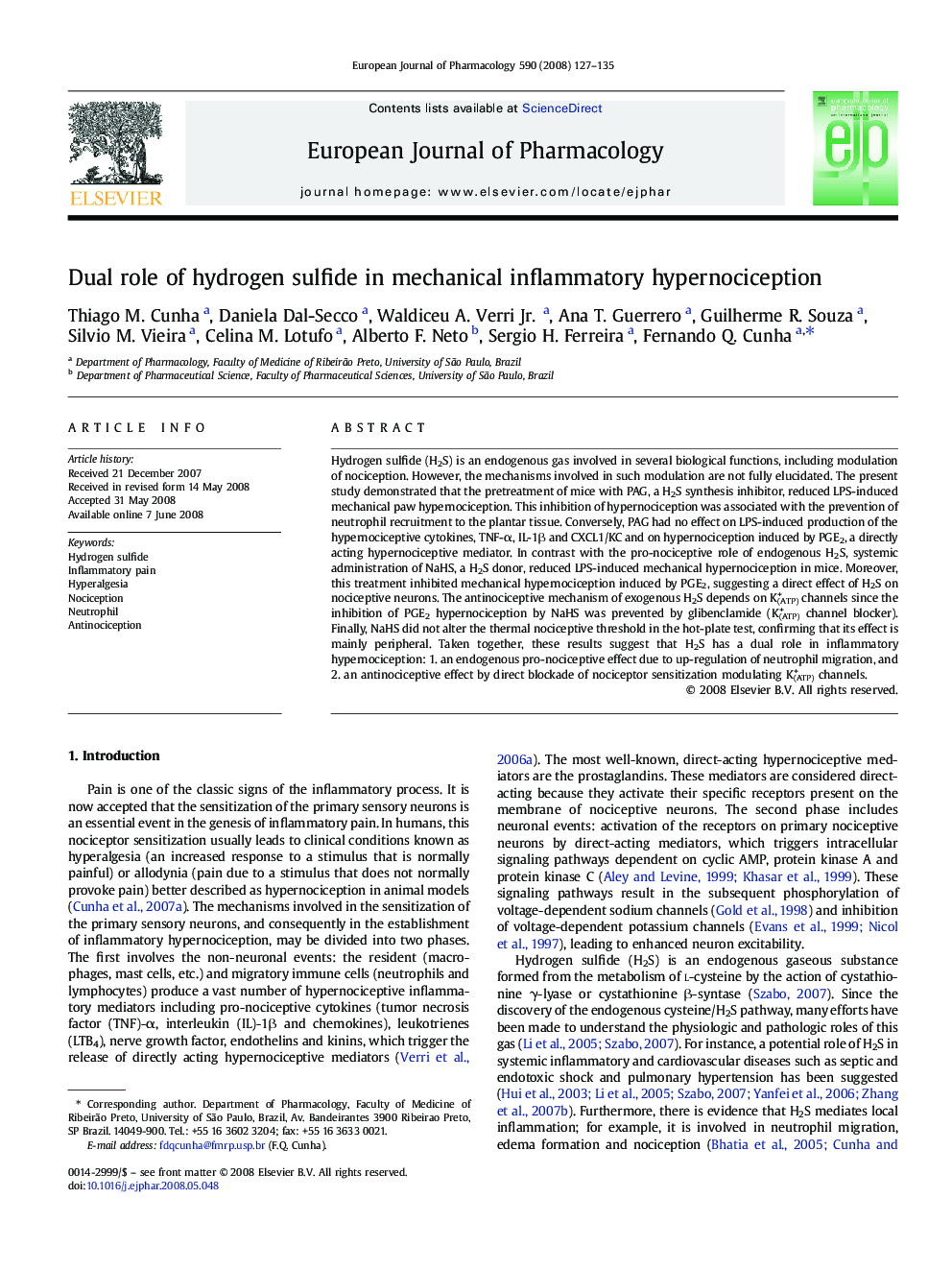| کد مقاله | کد نشریه | سال انتشار | مقاله انگلیسی | نسخه تمام متن |
|---|---|---|---|---|
| 2534935 | 1559106 | 2008 | 9 صفحه PDF | دانلود رایگان |

Hydrogen sulfide (H2S) is an endogenous gas involved in several biological functions, including modulation of nociception. However, the mechanisms involved in such modulation are not fully elucidated. The present study demonstrated that the pretreatment of mice with PAG, a H2S synthesis inhibitor, reduced LPS-induced mechanical paw hypernociception. This inhibition of hypernociception was associated with the prevention of neutrophil recruitment to the plantar tissue. Conversely, PAG had no effect on LPS-induced production of the hypernociceptive cytokines, TNF-α, IL-1β and CXCL1/KC and on hypernociception induced by PGE2, a directly acting hypernociceptive mediator. In contrast with the pro-nociceptive role of endogenous H2S, systemic administration of NaHS, a H2S donor, reduced LPS-induced mechanical hypernociception in mice. Moreover, this treatment inhibited mechanical hypernociception induced by PGE2, suggesting a direct effect of H2S on nociceptive neurons. The antinociceptive mechanism of exogenous H2S depends on K(ATP)+ channels since the inhibition of PGE2 hypernociception by NaHS was prevented by glibenclamide (K(ATP)+ channel blocker). Finally, NaHS did not alter the thermal nociceptive threshold in the hot-plate test, confirming that its effect is mainly peripheral. Taken together, these results suggest that H2S has a dual role in inflammatory hypernociception: 1. an endogenous pro-nociceptive effect due to up-regulation of neutrophil migration, and 2. an antinociceptive effect by direct blockade of nociceptor sensitization modulating K(ATP)+ channels.
Journal: European Journal of Pharmacology - Volume 590, Issues 1–3, 20 August 2008, Pages 127–135